Top Gaming Monitors for All Gamers
A monitor is the ultimate gaming accessory, essential for fully experiencing the stunning graphics and rapid refresh rates that your high-performance gaming PC can deliver. Why invest in a top-of-the-line graphics card and CPU if your display can't keep up? That's why we've curated a selection of the best gaming monitors, designed to provide crisp visuals and smooth motion fidelity, ensuring you can enjoy all the best PC games as they were meant to be played.
TL;DR – These Are the Best Gaming Monitors:
 Our Top Pick### Gigabyte FO32U2 Pro
Our Top Pick### Gigabyte FO32U2 Pro
6See it at AmazonSee it at Newegg ### AOC Q27G3XMN Mini-LED Gaming Monitor
### AOC Q27G3XMN Mini-LED Gaming Monitor
2See it at Amazon ### Acer Predator X34 OLED
### Acer Predator X34 OLED
0See it at AmazonSee it at B&H  ### Dell Alienware AW2725Q
### Dell Alienware AW2725Q
1See it at Dell ### Asus ROG Swift PG27AQDP
### Asus ROG Swift PG27AQDP
0See it at Newegg ### Asus TUF Gaming VG279QM
### Asus TUF Gaming VG279QM
1See it at AmazonYour gaming monitor should align with your PC's capabilities; there's no sense in opting for one of the best 4K monitors if your GeForce RTX 4060 can't handle games at that resolution. Similarly, pairing a Radeon RX 7900 XTX with a 1080p display is a missed opportunity. The best gaming monitors showcase your PC's full potential, offering excellent picture quality, fast response times, and a range of gaming features. High refresh rates ensure smooth gameplay, which can be crucial for competitive gamers.
Whether you're seeking a future-proof option with a sharp 4K picture, an OLED panel, and a high 240Hz refresh rate, like our top pick, the Gigabyte FO32U2 Pro, or you need a more budget-friendly monitor, we've got options for you. All our recommended gaming monitors have been thoroughly evaluated and are designed to meet various gaming needs.
Looking for savings? Check out the best gaming monitor deals available now.
Gigabyte Aorus FO32U2 Pro – Photos
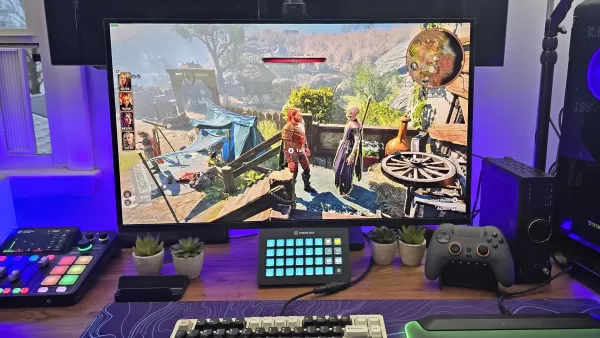
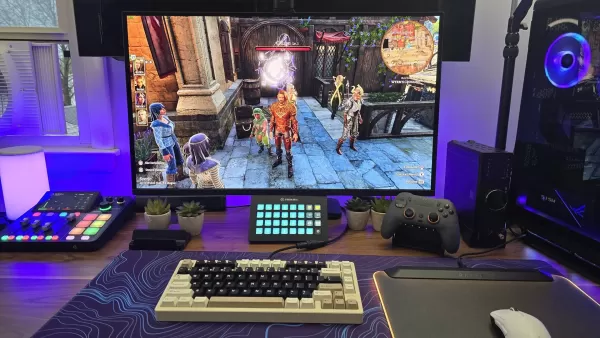 13 Images
13 Images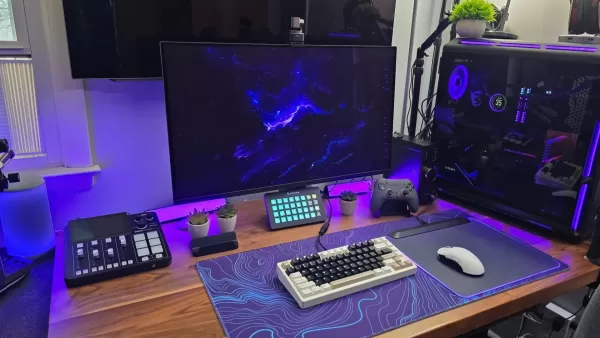


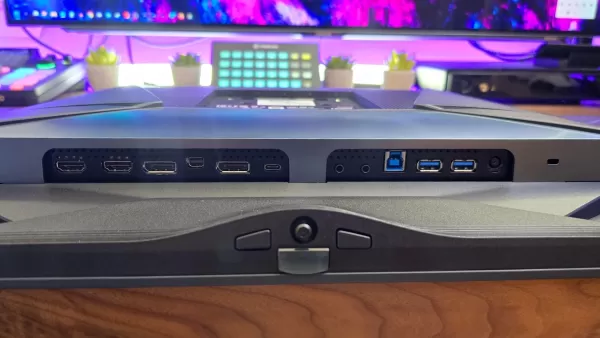 1. Gigabyte FO32U2 Pro
1. Gigabyte FO32U2 Pro
Best Gaming Monitor
 Our Top Pick### Gigabyte FO32U2 Pro
Our Top Pick### Gigabyte FO32U2 Pro
6This stunning monitor excels in every aspect, thanks to its array of features and OLED panelSee it at AmazonSee it at NeweggProduct SpecificationsScreen size31.5"Aspect ratio16:9Resolution3840x2160Panel typeOLEDHDR compatibilityHDR TrueBlack 400Brightness1,000 nitsRefresh rate240HzResponse time0.03msInputs2 x HDMI 2.1, 1 x DisplayPort 1.4PROSOutstanding picture qualityExtremely thin panelCONSExpensiveThe Gigabyte FO32U2 Pro is the epitome of OLED technology in gaming monitors. This 32-inch 4K marvel boasts an exceptionally slim profile and one of the brightest displays I've tested. Though it's on the pricier side, the investment is justified by its unparalleled performance.
This monitor is designed with the future in mind. While current top-tier graphics cards struggle to push 4K at 240Hz, the Gigabyte Aorus FO32U is ready for that challenge. It supports DisplayPort 2.1, a feature not yet common in current gaming PCs, ensuring it remains relevant for years to come.
The OLED panel delivers exceptional color accuracy, covering up to 99% of the DCI-P3 color gamut. With a peak brightness of 1,000 nits and a contrast ratio of 1.5M:1, every image bursts with vividness. Its flagship features include picture-in-picture and an automatic black equalizer, enhancing your viewing experience. With the Gigabyte Control Center, you can fine-tune settings directly from your desktop.
This monitor is a dream for any gamer, and while it's a significant investment, you're getting top-notch quality.
 2. AOC Q27G3XMN Mini-LED
2. AOC Q27G3XMN Mini-LED
Best Budget Gaming Monitor
 ### AOC Q27G3XMN Mini-LED Gaming Monitor
### AOC Q27G3XMN Mini-LED Gaming Monitor
0QHD, 1440p, high refresh rate, and mini-LED backlight for true HDR? Grab this monitor while it's still affordable!See it at AmazonProduct SpecificationsScreen size27"Aspect ratio16:9Resolution2560x1440Panel typeVAHDR compatibilityHDR1000Brightness1,000 nitsRefresh rate180HzResponse time1ms (GTG)Inputs1 x DisplayPort 1.4, 2 x HDMI 2.0, 1 x 3.5mm AudioPROSMini-LED backlight technologyHigh refresh rate for improved responsiveness and reduced motion blurPeak brightness of 1,000 nits for true HDRCONSNo USB connectivityLimited local dimming zonesThe AOC Q27G3XMN Gaming Monitor delivers true HDR gaming at a budget-friendly price. Its mini-LED backlight provides localized brightness and contrast up to 1,000 nits, ensuring a full HDR experience.
With a VA panel, it offers superior contrast, even without local dimming. The 336 local dimming zones enhance color vibrancy and black depth. Despite its affordability, the 27-inch display at 1440p resolution offers crisp visuals and smooth gameplay. It lacks built-in speakers and a USB hub, but these are minor trade-offs for its value.
The monitor's reduced local dimming zones can cause some blooming, noticeable in darker scenes. However, this doesn't detract from its overall impressive performance and makes it a great choice for budget-conscious gamers.
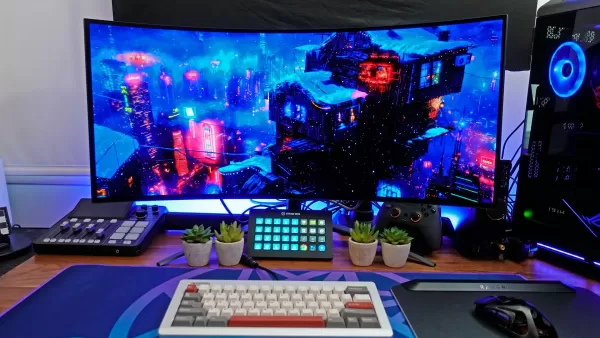 3. Acer Predator X34 OLED
3. Acer Predator X34 OLED
Best Ultrawide Gaming Monitor
 ### Acer Predator X34 OLED
### Acer Predator X34 OLED
0The Acer Predator X34 OLED combines a spacious 34-inch 21:9 display with all the features you'd expect from a top-tier gaming monitor. See it at AmazonSee it at B&H Product SpecificationsScreen size34Aspect ratio21:9Resolution3440x1440Panel typeOLEDHDR compatibilityVESA DisplayHDR True Black 400Brightness1,300 cd/m2 (peak)Refresh rate240HzResponse time0.03msInputs2 x HDMI 2.1, 1 x DisplayPort 1.4, 2 x USB 3.2 Gen 2 Type-CPROSDeep blacks and bright highlightsRich, engaging colorsExcellent refresh rate and response timeOffers an immersive gaming experience CONSDeep curvature may not suit everyoneOnly reference preset is DCI-P3, not sRGBThe Acer Predator X34 OLED stands out as the best ultrawide gaming monitor for 2025. Its 34-inch 21:9 display, paired with its OLED technology, delivers a bright, fast, and immersive gaming experience.
The deeply curved 800R OLED display enhances immersion, though it might take some time to adjust to the text warping. With a 0.03ms response time and a 240Hz refresh rate, it ensures minimal input latency, ideal for competitive gaming.
The monitor's peak brightness of 1,300 nits results in stunning highlights and deep blacks, setting it apart from other gaming monitors. However, it lacks an sRGB mode for content creation, which is a notable omission.
Alienware AW2725Q - Photos
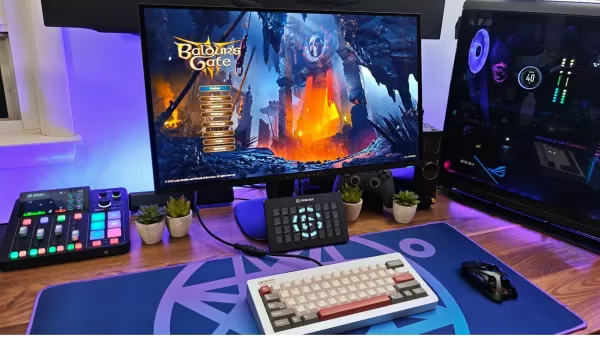
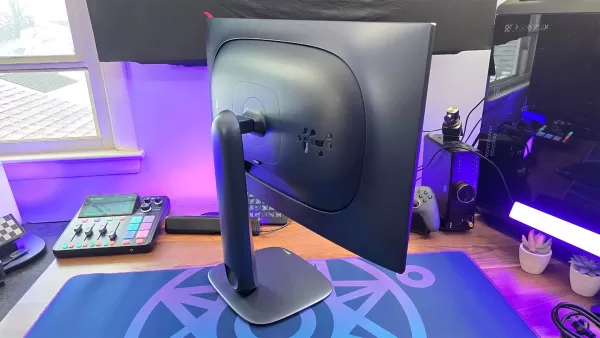 15 Images
15 Images
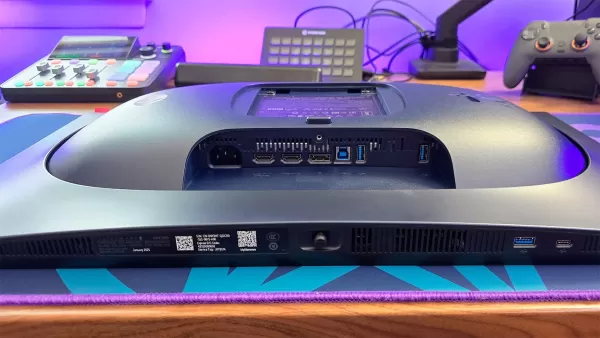

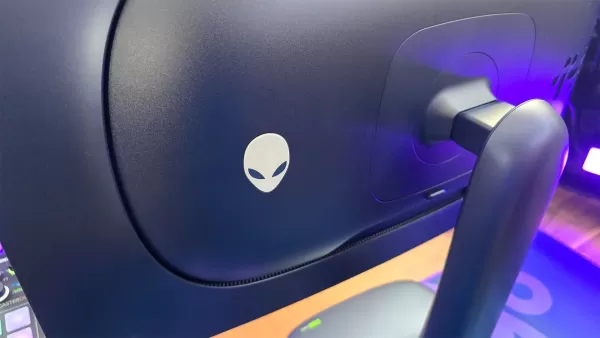 4. Dell Alienware AW2725Q
4. Dell Alienware AW2725Q
Best 4K Gaming Monitor
 ### Dell Alienware AW2725Q
### Dell Alienware AW2725Q
1The Dell Alienware AW2725Q offers exceptional value among premium 4K gaming monitors, with Dolby Vision support and a design friendly for console gamers. See it at DellProduct SpecificationsScreen size26.7"Aspect ratio16:9Resolution3840x2160Panel typeQD-OLEDHDR compatibilityVESA DisplayHDR True Black 400Brightness1,000 nitsRefresh rate240HzResponse time0.03msInputs2 x HDMI 2.1, 1 x DisplayPort 1.4, 3 x USB 3.2 Gen 1 Type-A, 1 x USB 3.2 Gen 1 Type-CPROSGorgeous picture with high PPI for improved clarityImpressive color accuracy out of the boxGood value for what it offersCONSLow SDR brightnessLacks DisplayPort 2.1The Dell Alienware AW2725Q is a top choice for its stunning visuals and performance at 4K. This monitor features an upgraded QD-OLED panel and a 240Hz refresh rate, alongside a refreshed, more minimalistic design. At 27 inches, it delivers a high pixel density of 166PPI, ensuring every detail is sharp and clear.
The monitor's OLED panel offers outstanding color performance and supports VESA DisplayHDR True Black 400 and Dolby Vision HDR. It comes well-calibrated out of the box, making it a great choice for content creators as well.
While its SDR brightness is lower, it reaches 1,000 nits in HDR mode, and its 0.03ms response time paired with a 240Hz refresh rate makes it perfect for fast-paced gaming. It lacks DisplayPort 2.1 support, which might be a consideration for some users.
At $899 at launch, it provides solid value and is expected to become more affordable over time.
Asus ROG Swift OLED PG27AQDP – Photos

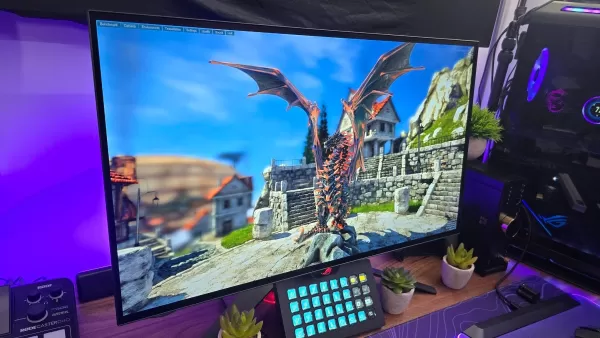 19 Images
19 Images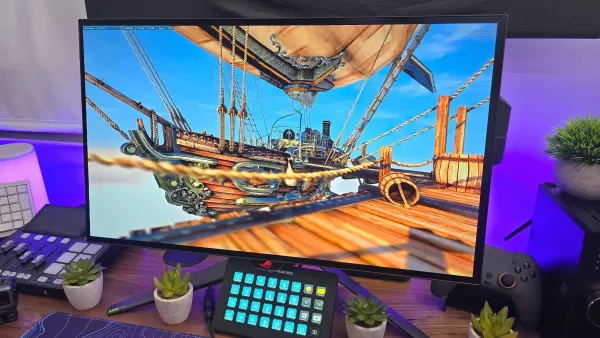
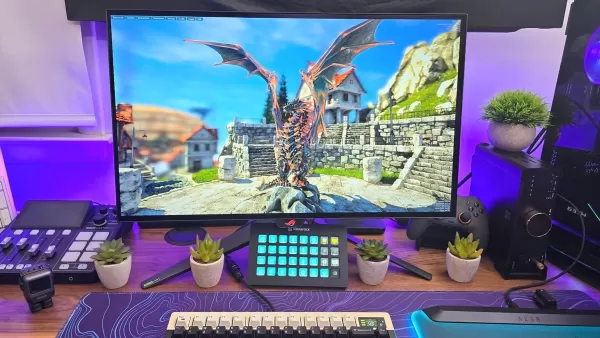
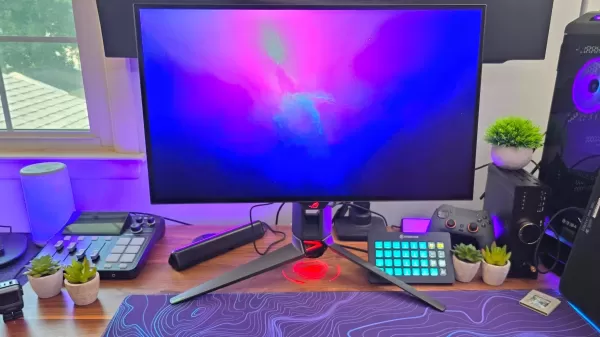
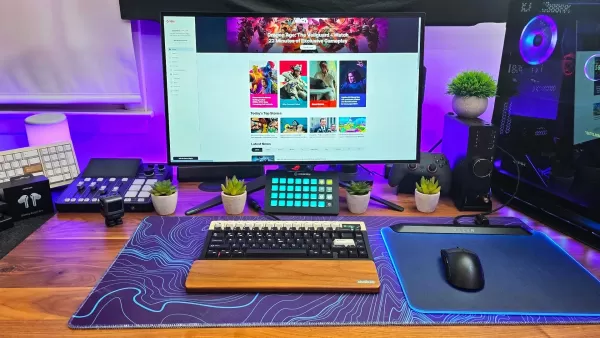 5. Asus ROG Swift PG27AQDP
5. Asus ROG Swift PG27AQDP
Best 1440p Gaming Monitor
 ### Asus ROG Swift PG27AQDP
### Asus ROG Swift PG27AQDP
0The Asus ROG Swift PG27AQDP is an outstanding choice for competitive gamers, delivering top-notch performance. See it at NeweggProduct SpecificationsScreen size26.5Aspect ratio16:9Resolution2560 x 1440Panel typeOLED FreeSync Premium, G-Sync CompatibleHDRVESA DisplayHDR True Black Brightness1,300 cd/m2 (peak)Refresh rate480HzResponse time 0.03msInputs2 x HDMI 2.1, 1 x DisplayPort 1.4, 2 x USB 3.2 Gen 2 Type-A, HeadphonesPROSPerfectly sized for 1440pCan get exceptionally bright and infinitely dark for great HDRNative 480Hz refresh rateOut of the box color accuracyCONSFew games, outside of esports, will ever hit 480HzThe Asus ROG Swift PG27AQDP is the ideal 1440p monitor for esports and general gaming. It offers excellent HDR performance and impressive out-of-the-box color accuracy. Its 480Hz refresh rate is among the fastest available, providing a clear advantage in competitive gaming.
The monitor's OLED panel produces stunning visuals with rich colors and impeccable contrast, making it perfect for gaming, movies, and content viewing. Its fast refresh rate and 0.03ms response time eliminate motion blur, enhancing gameplay responsiveness.
It includes comprehensive OLED protection features, including pixel shifting, pixel refresh, and dynamic dimming to prevent image retention. Asus also offers a three-year warranty with burn-in coverage, adding peace of mind. While it lacks KVM or USB video input, its overall performance is hard to beat.

Adjustable stand on the Asus TUF Gaming VG279QM 6. Asus TUF Gaming VG279QM
Best 1080p Gaming Monitor
 ### Asus TUF Gaming VG279QM
### Asus TUF Gaming VG279QM
1A 27-inch Full HD display with an overclockable 240Hz refresh rate, low input lag, and adaptive sync for smooth gameplay. See it at AmazonProduct SpecificationsScreen size27"Aspect ratio16:9Resolution1,920 x 1,080Panel typeIPS FreeSync, G-Sync compatibleBrightness400cd/m2Refresh rate240Hz, 280Hz (OC)Response time1ms (GtG)Inputs2 x HDMI 2.0, 1 x DisplayPort 1.2PROSBudget-friendlyExcellent motion handlingCONSSome pixel peeping1080p monitors still hold their ground, and the Asus TUF Gaming VG279QM is a testament to that. Priced under $300, it offers an overclockable 240Hz refresh rate, a one-millisecond response time, and low input lag, ensuring smooth gameplay. FreeSync and G-Sync compatibility ensure tear-free visuals.
The 27-inch screen at 1080p resolution provides an immersive experience, though some pixel peeping might occur. The IPS panel offers good viewing angles and color reproduction, while its 400-nit brightness makes it suitable for brighter environments. It's DisplayHDR 400 certified, but don't expect stellar HDR performance.
Additional features include a height-adjustable stand and multiple connectivity options, making it a solid value for budget gamers.
AnswerSee Results How to Choose a Gaming MonitorWhen choosing a gaming monitor, consider four key factors: screen size, resolution, panel type, and aspect ratio. We'll also cover technical aspects like refresh rate and variable refresh rate technology to help you make an informed decision.
Screen size: The first question is often, "How big?" Your answer depends on your space. For a compact setup, smaller monitors are ideal; for a TV replacement, consider larger options. Here are some guidelines for matching size with resolution: 1080p works well up to 27 inches, 1440p is ideal for 27 to 32 inches, and 4K is best at 32 inches or larger for desk use.
 Aspect ratio: This determines the shape of your display. Most monitors use a 16:9 aspect ratio, while ultrawide monitors often use 21:9. Even wider 32:9 displays are gaining popularity.
Aspect ratio: This determines the shape of your display. Most monitors use a 16:9 aspect ratio, while ultrawide monitors often use 21:9. Even wider 32:9 displays are gaining popularity.
Screen resolution: This affects image sharpness. Common options include Full HD (1920x1080), Quad HD (2560x1440), and Ultra HD or 4K (3840x2160). Higher resolutions demand more from your graphics card.
Panel type: Different panel types offer unique benefits. Avoid TN panels as they're outdated. IPS panels provide excellent color and wide viewing angles, with response times around 3-5ms. VA panels balance image quality and response times but can suffer from ghosting. Mini-LED and OLED panels offer superior contrast and HDR performance, with OLEDs being the best for color and contrast but requiring more care to avoid burn-in.
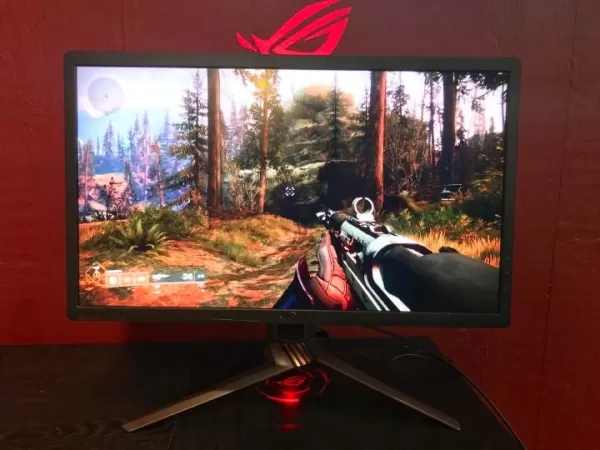 Response time: For competitive gaming, aim for a 1ms response time. For casual gaming, 3-5ms is sufficient. OLED panels offer the fastest response times at around 0.03ms.
Response time: For competitive gaming, aim for a 1ms response time. For casual gaming, 3-5ms is sufficient. OLED panels offer the fastest response times at around 0.03ms.
Refresh rate: This determines how often your screen updates. Standard rates are 60Hz, but higher rates like 120Hz, 144Hz, 240Hz, and even 500Hz provide smoother gameplay, essential for competitive gaming.
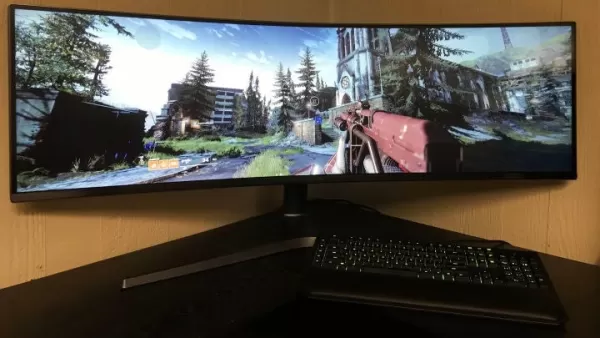 G-Sync vs FreeSync: Variable refresh rate (VRR) technology syncs your monitor's refresh rate with your GPU's frame rate to prevent screen tearing. Nvidia's G-Sync and AMD's FreeSync are the two main types, each with different tiers of performance. Ensure your graphics card is compatible with the VRR technology of your chosen monitor.
G-Sync vs FreeSync: Variable refresh rate (VRR) technology syncs your monitor's refresh rate with your GPU's frame rate to prevent screen tearing. Nvidia's G-Sync and AMD's FreeSync are the two main types, each with different tiers of performance. Ensure your graphics card is compatible with the VRR technology of your chosen monitor.
When buying a gaming monitor, ensure your graphics card can handle the desired resolution and refresh rate to avoid wasting money on a display your system can't fully utilize.
Gaming Monitor vs. Gaming TV: Which Is Best for You?
Choosing between a gaming monitor and a gaming TV depends on your gaming preferences. For a large-screen experience, a gaming TV might be ideal, but monitors often excel in gaming performance.
Image quality: High-end TVs can offer superior brightness, contrast, and color due to OLED or mini-LED technology, often at a lower cost than comparable monitors.
Gaming performance: Monitors typically have lower input lag, higher refresh rates, and better pixel response times. Budget monitors can reach high frame rates, often starting at 120Hz and going up to 500Hz, with VRR technology included.
Value: Monitors provide better value, with many budget options offering gaming features like high refresh rates and adaptive sync. Gaming TVs at similar prices may lack these features.
Features and size: Gaming monitors often include features like adjustable stands, which are less common in TVs. Larger monitors over 43 inches are rare, making TVs a better choice for couch gaming or larger screens. However, large monitors can enhance productivity and immersion at a desk.
Gaming Monitor FAQ
What's the difference between Nvidia G-Sync and AMD FreeSync?
Both use VRR to sync display refresh rates with your gaming device's frame rate. They share the VESA Adaptive-Sync standard, and most FreeSync displays work with G-Sync and vice versa. Nvidia offers G-Sync Compatible, G-Sync, and G-Sync Ultimate, while AMD provides FreeSync, FreeSync Premium, and FreeSync Premium Pro, each with varying levels of performance and features.
What’s the best resolution for a gaming monitor?
The ideal resolution depends on your needs. For high refresh rates or budget setups, 1080p is suitable. For crisp visuals, 4K is ideal for larger screens, but requires powerful hardware. 1440p offers a good balance between resolution and performance, suitable for competitive gaming with mid-range graphics cards.
Is HDR worth it?
HDR enhances color, brightness, and contrast, making images more vivid. True HDR starts at 1000 nits of peak brightness, though benefits can be seen at 600 nits. OLED and Mini-LED panels provide the best contrast. Be wary of monitors claiming HDR support with lower brightness, as they may only be HDR compatible.
When is the best time to get a gaming monitor?
Gaming monitors can be pricey, so consider buying during sales events like Amazon Prime Day, Black Friday, or Cyber Monday. Also, check for deals when new monitor models are released, as older models often go on sale.
- 1 Holiday Thief Arrives in Seekers Notes Dec 26,2024
- 2 Jujutsu Kaisen Phantom Parade: Tier List Update for 2024 Dec 28,2024
- 3 How To Find and Beat the Storm King in LEGO Fortnite Jan 05,2025
- 4 PUBG Mobile's Championship Finale Nears Jan 09,2025
- 5 Goddess Of Victory: Nikke Is Dropping a New Year’s Update and Collabs with Evangelion and Stellar Blade Soon Jan 04,2025
- 6 Brok's Festive Adventure Now Available Jan 03,2025
- 7 Blue Archive introduces new story event with the Cyber New Year March Jan 05,2025
- 8 Skibidi Toilet DMCAs Garry's Mod But Legitimacy Remains Unclear Jan 07,2025
-
Mastering the Art of Digital Tools
A total of 10
-
Hidden Gems: Unexpectedly Useful Other Apps
A total of 10
-
Top Free Adventure Necessary Games for Android
A total of 4














![LeMOMnade: Family Squeeze! – Version 1.1.1 [mtrellex]](https://img.3xbz.com/uploads/38/1719569762667e8d62c486e.jpg)



![My Cute Roommate 2 – New Version 1.0 Extra [Astaros3D]](https://img.3xbz.com/uploads/38/1719606486667f1cd652f1a.jpg)











